Related Research Articles
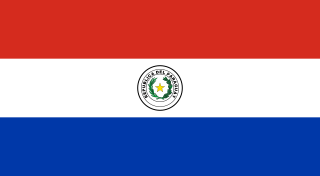
Paraguay, officially the Republic of Paraguay, is a landlocked country in South America. It is bordered by Argentina to the south and southwest, Brazil to the east and northeast, and Bolivia to the northwest. It has a population of around 6.1 million, nearly 2.3 million of whom live in the capital and largest city of Asunción, and its surrounding metro area.
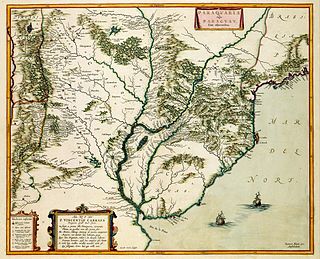
The history of Paraguay encompasses thousands of years of human habitation. Both agricultural and nomadic Guaycuruan lived in the region at the time of the Spanish Conquest. It became a relatively neglected part of the Spanish Empire due to its isolation and lack of mineral wealth, nonetheless a small group of Spanish settlers came to reside in the area, increasingly intermarrying with native women to produce a mestizo population. In the 17th and 18th centuries, Jesuit missionaries organized the natives into planned communities known as reducciones, and the experiment gained notable attention in Enlightenment Era Europe.
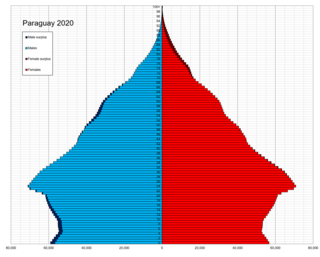
Demographic features of the population of Paraguay include population density, ethnicity, education level, health of the populace, economic status, religious affiliations and other aspects of the population.

The economy of Paraguay is a market economy that is highly dependent on agriculture products. In recent years, Paraguay's economy has grown as a result of increased agricultural exports, especially soybeans. Paraguay has the economic advantages of a young population and vast hydroelectric power. Its disadvantages include the few available mineral resources, and political instability. The government welcomes foreign investment.

Stevia is a sweet sugar substitute extracted from the leaves of the plant species Stevia rebaudiana native to Paraguay and Brazil.

Asunción is the capital and the largest city of Paraguay. The city stands on the eastern bank of the Paraguay River, almost at the confluence of this river with the Pilcomayo River. The Paraguay River and the Bay of Asunción in the northwest separate the city from the Occidental Region of Paraguay and from Argentina in the south part of the city. The rest of the city is surrounded by the Central Department.

The South Region of Brazil is one of the five regions of Brazil. It includes the states of Paraná, Rio Grande do Sul, and Santa Catarina, and covers 576,409.6 square kilometres (222,553.0 sq mi), being the smallest region of the country, occupying only about 6.76% of the territory of Brazil. Its whole area is smaller than that of the state of Minas Gerais, in Southeast Brazil, for example or the whole metropolitan France.

Stevia rebaudiana is a plant species in the genus Stevia of the family Asteraceae. It is commonly known as candyleaf, sweetleaf or sugarleaf.
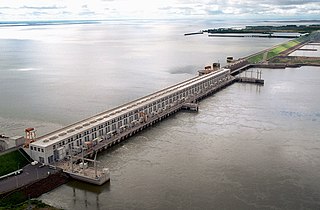
The Yacyretá Dam or Jasyretâ-Apipé Hydroelectric Power Station is a dam and hydroelectric power plant built over the waterfalls of Jasyretâ-Apipé in the Paraná River, between the Paraguayan City of Ayolas and the Argentine Province of Corrientes. The dam is named for Yacyretá Island just upstream, much of which the dam submerged. The word "Yacyreta" is the Hispanicized spelling of the original Guaraní term Jasyretâ.

Villeta is a city of Paraguay in the Central Department, on the banks of Paraguay River. It is an important industrial center and port.
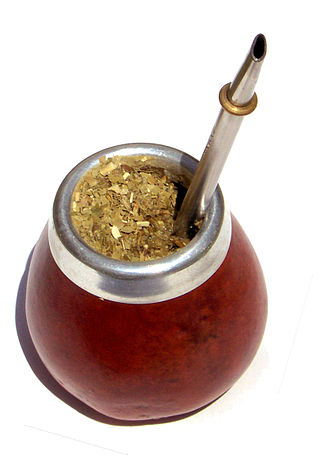
Mate or maté is a traditional South American caffeine-rich infused herbal drink. It is also known as chimarrão or cimarrón, and ka’ay in Guarani. It is made by soaking dried yerba mate leaves in hot water and is traditionally served with a metal straw in a container typically made from a calabash gourd, but also made from a cattle horn in some areas. A very similar preparation, known as mate cocido, removes some of the plant material and sometimes comes in tea bags. Today, mate is sold commercially in tea bags and as bottled iced tea.

Filadelfia is the first district and main city of Carrillo in Guanacaste, Costa Rica. It was declared an archaeological city because of all the indigenous cemeteries found near the Tempisque River.

Abaí is a district of Caazapá, Paraguay. It is the biggest district of the department and one of the country's biggest agricultural zones.
Lima is a town of the Department of San Pedro Paraguay.
The water resources management system in Uruguay has been influenced by the general sense of water as an abundant resource in the country. Average annual rainfall is 1,182 mm, representing a contribution of 210 km3 annually throughout its territory. In 2002, the per capita renewable water resources was 41,065 cubic meters, way above the world average 8,467 m3 in 2006. Uruguay also shares one of the largest groundwater reserves in the world, the Guarani Aquifer, with Brazil, Argentina, Paraguay. The Guarani aquifer covers 1,200,000 square kilometers and has a storage capacity of 40,000 km3.
Electricity in Paraguay comes almost entirely from hydropower. As Paraguay is landlocked and has no significant natural gas reserves, its citizens often burn firewood which contributes to deforestation. The government imports fuel to use, and state-owned Petróleos Paraguayos (Petropar) has a monopoly on all crude oil and petroleum product sales and imports in Paraguay. It operates Paraguay's sole refinery, the 7,500 bbl/d (1,190 m3/d) Villa Elisa facility.

Paraguay–Spain relations are the current and historical relations between Paraguay and Spain. Both nations are members of the Association of Spanish Language Academies and the Organization of Ibero-American States.

Throughout its history, agriculture in Paraguay has been the mainstay of the economy. This trend has continued today and in the late 1980s the agricultural sector generally accounted for 48 percent of the nation's employment, 23 percent of GDP, and 98 percent of export earnings. The sector comprised a strong food and cash crop base, a large livestock subsector including cattle ranching and beef production, and a vibrant timber industry.

The history of yerba mate stretches back to pre-Columbian Paraguay. It is marked by a rapid expansion in harvest and consumption in the Spanish South American colonies but also by its difficult domestication process that began in the mid 17th century and again later when production was industrialized around 1900.

The cuisine of Paraguay is the set of dishes and culinary techniques of Paraguay. It has a marked influence of the Guaraní people combined with the Spanish cuisine and other marked influences coming from the immigration received by bordering countries such as Italian cuisine and German cuisine. The city of Asunción is the epicenter of the distinctive gastronomy that extends in current Paraguay and its areas of influence, which is the reason why is considered the mother of the gastronomy of the Río de la Plata. It is worth clarifying that in the Paraguayan society, the exchange of knowledge between mestizos, creoles and cario-guaraní people occurred before the Jesuit missions.
References
- 1 2 3 4 5 Acosta, N. (2015). "Las potencialidades de la stevia nacional en el mercado nacional" ("The potential of Stevia in the national market") Archived 2015-09-23 at the Wayback Machine (Spanish). Centro de Análisis y Difusión de la Economía Paraguaya. Accessed 11 August 2015.
- ↑ 2010, quoted in Acosta, 2015, p. 5